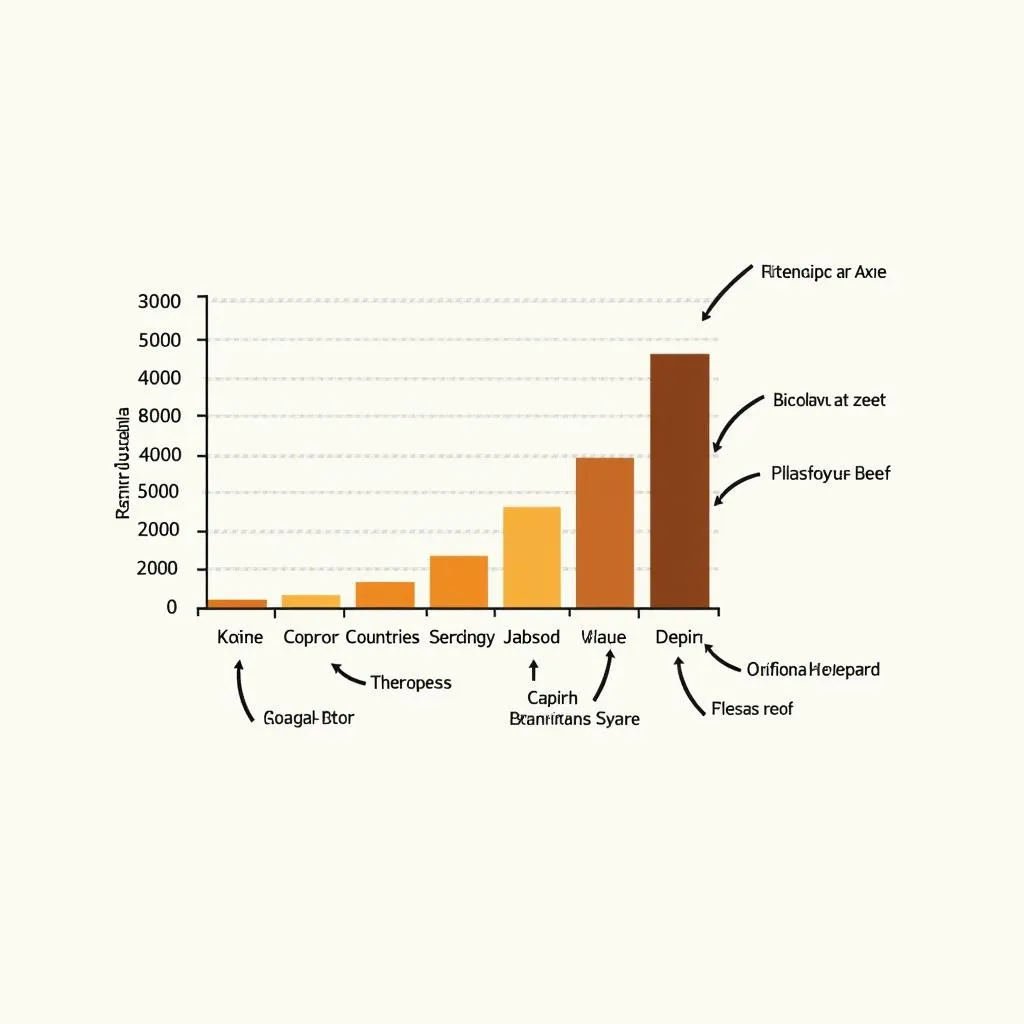Understanding Bar Charts in IELTS Writing Task 1
Bar charts are a common type of visual representation in IELTS Writing Task 1. They display data using rectangular bars of varying lengths, allowing for easy comparison between different categories or over time periods. Mastering the analysis of bar charts is crucial for achieving a high score in this section of the IELTS exam.
Key Elements of Bar Charts
When approaching a bar chart in IELTS Writing Task 1, it’s essential to identify the following elements:
- Title: Provides an overview of the data being presented
- Axes: Horizontal (x-axis) and vertical (y-axis) lines that form the chart’s framework
- Labels: Text describing the categories on each axis
- Bars: Rectangular shapes representing data values
- Legend: Explains the meaning of different colors or patterns used in the bars (if applicable)
Understanding these components will help you accurately describe and analyze the information presented in the chart.

Essential Tips for Analyzing Bar Charts
1. Identify the Main Trends
Start by looking at the overall picture. What are the most significant patterns or trends you can see? Are there any notable increases, decreases, or fluctuations? This overview will form the basis of your introduction and help guide your analysis.
2. Use Appropriate Language for Comparisons
When describing bar charts, it’s crucial to use a variety of comparative and superlative forms. Some useful phrases include:
- “X is significantly higher/lower than Y”
- “A shows the greatest increase/decrease”
- “B remains relatively stable compared to C”
- “The difference between P and Q is marginal”
Incorporating these expressions will demonstrate your language proficiency and ability to analyze data accurately.
3. Group Similar Data
If the bar chart contains multiple categories or time periods, try to group similar data together. This approach allows for a more organized and coherent response. For example:
“The chart shows that developed countries (USA, UK, and Japan) have consistently higher levels of internet usage compared to developing nations (India and Brazil).”
4. Highlight Key Figures
While it’s not necessary to mention every single number, including some specific figures adds precision to your analysis. Focus on the most significant or interesting data points:
“Coffee consumption in Italy peaked at 5.8 kg per capita in 2015, a 20% increase from the previous year.”
5. Describe Proportions Accurately
When comparing data, use precise language to describe proportions:
- “Twice as much/many” (100% more)
- “Three times as much/many” (200% more)
- “Half as much/many” (50% less)
- “A quarter of” (25% of)
For example: “Car ownership in Urban City is twice as high as in Rural Town.”
Structuring Your Response
A well-structured response to a bar chart question typically includes:
- Introduction: Paraphrase the question and provide an overview of the chart.
- Body Paragraph 1: Describe the main trends or patterns.
- Body Paragraph 2: Analyze specific details or interesting features.
- Conclusion: Summarize the key points without introducing new information.
Sample Introduction
“The bar chart illustrates the annual coffee consumption per capita in five European countries from 2010 to 2020. Overall, it can be observed that Italy consistently maintained the highest coffee consumption throughout the decade, while there were varying trends among the other nations.”
Common Pitfalls to Avoid
-
Over-describing: Don’t waste time describing every single bar. Focus on the most significant trends and patterns.
-
Neglecting the units: Always mention the units of measurement (e.g., kilograms, percentages, millions) when discussing specific figures.
-
Making assumptions: Stick to the data presented in the chart. Avoid speculating about reasons for trends unless explicitly asked.
-
Using personal opinions: IELTS Writing Task 1 requires objective analysis. Save your opinions for Task 2.
-
Forgetting time references: If the chart shows data over time, use appropriate tenses (past for historical data, present perfect for trends continuing to the present).
Practice and Improvement Strategies
To excel in analyzing bar charts for IELTS Writing Task 1:
-
Study a variety of bar chart types and practice describing them within the 20-minute time limit.
-
Build a vocabulary bank of useful terms and phrases for describing trends and making comparisons.
-
Analyze real-world bar charts from reputable sources like newspapers or government reports to familiarize yourself with different data presentation styles.
-
Have your practice essays reviewed by a teacher or experienced IELTS tutor for personalized feedback.
-
Time yourself regularly to ensure you can complete the task within the allocated 20 minutes.
By following these tips and consistently practicing, you’ll develop the skills necessary to confidently analyze bar charts in IELTS Writing Task 1. Remember, the key to success lies in clear organization, accurate data interpretation, and the appropriate use of academic language.